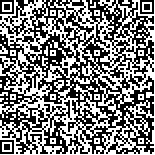| 引用本文: | 曹站霞,陈毓龙,李伟霞,王晓艳,牛璐,贾文汇,王炎,唐进法.基于网络药理学和细胞试验探讨补骨脂致肝损伤的毒理机制[J].中国现代应用药学,2022,39(16):2052-2062. |
| CAO Zhanxia,CHEN Yulong,LI Weixia,WANG Xiaoyan,NIU Lu,JIA Wenhui,WANG Yan,TANG Jinfa.Study on the Toxicological Mechanism of Psoraleae Fructus Induced Liver Injury Based on Network Pharmacology and Cell Experiment[J].Chin J Mod Appl Pharm(中国现代应用药学),2022,39(16):2052-2062. |
|
| |
|
|
| 本文已被:浏览 1536次 下载 1037次 |

码上扫一扫! |
|
|
| 基于网络药理学和细胞试验探讨补骨脂致肝损伤的毒理机制 |
|
曹站霞1, 陈毓龙2, 李伟霞1,2,3, 王晓艳1,3, 牛璐2, 贾文汇2, 王炎2, 唐进法1,2,3
|
|
1.河南中医药大学第一附属医院中药临床评价技术河南省工程实验室, 郑州 450000;2.河南中医药大学, 郑州 450046;3.河南中医药大学呼吸疾病中医药防治省部共建协同创新中心, 郑州 450000
|
|
| 摘要: |
| 目的 采用网络药理学探讨补骨脂致肝损伤作用机制。方法 通过ETCM、CTD数据库及文献检索筛选补骨脂潜在毒性成分,利用Swiss Target Prediction平台预测成分作用靶标;通过GeneCards数据库收集肝损伤相关靶蛋白,然后与成分作用靶标匹配得到共有靶基因,构建补骨脂肝损伤蛋白互作网络、潜在毒性成分-靶标-通路网络,并进行生物功能富集分析和分子对接验证。使用体外细胞试验方法对补骨脂致肝损伤关键靶标作用进行验证。结果 筛选得到25个补骨脂潜在毒性成分,与肝损伤共同作用靶标136个,其中PIK3CA、HSP90AA1、SRC及AKT1等可能是补骨脂致肝损伤的关键靶点。补骨脂致肝损伤相关的主要信号通路包括PI3K-Akt信号通路、VEGF信号通路、HIF-1信号通路等,可能是通过对细胞凋亡、黏着斑、胆汁分泌等的调控引起的。分子对接结果显示,补骨脂中潜在毒性成分与关键靶标蛋白具有较强的结合能力。体外细胞试验结果验证补骨脂主要成分可抑制MAPK1、PIK3CA、AKT1和JAK2的mRNA的表达,引起肝脏的损伤。结论 补骨脂致肝损伤具有多成分、多靶标、多通路的作用特点,为进一步阐明其肝损伤物质基础和作用机制提供参考和依据。 |
| 关键词: 补骨脂 肝损伤 网络药理学 分子对接 毒理机制 细胞试验 |
| DOI:10.13748/j.cnki.issn1007-7693.2022.16.002 |
| 分类号:R285.5 |
| 基金项目:国家自然科学基金项目(82173993,U1904129);河南省中医药科学研究专项重点课题(2019ZYBJ08);河南省高等学校重点科研项目计划(19A360007);河南省中医药科学研究专项(2017ZY2019);河南省中医药拔尖人才培养项目(豫中医科教[2018]35号) |
|
| Study on the Toxicological Mechanism of Psoraleae Fructus Induced Liver Injury Based on Network Pharmacology and Cell Experiment |
|
CAO Zhanxia1, CHEN Yulong2, LI Weixia1,2,3, WANG Xiaoyan1,3, NIU Lu2, JIA Wenhui2, WANG Yan2, TANG Jinfa1,2,3
|
|
1.Henan Province Engineering Laboratory for Clinical Evaluation Technology of Chinese Medicine, The First Affiliated Hospital of Henan University of Chinese Medicine, Zhengzhou 450000, China;2.Henan University of Chinese Medicine, Zhengzhou 450046, China;3.Provincial and Ministerial Co Construction Collaborative Innovation Center for Prevention and Treatment of Respiratory Diseases with Traditional Chinese Medicine of Henan University of Chinese Medicine, Zhengzhou 450000, China
|
| Abstract: |
| OBJECTIVE To explore the mechanism of Psoraleae Fructus (PF) induced liver injury by using network pharmacology.METHODS The potential toxic components of PF were screened by ETCM,CTD databases and literatures.The Swiss Target Prediction platform was used to predict the target related to components of PF.The target proteins related to liver injury were collected from GeneCards database.And the common target genes both related to the components of PF and liver injury were obtained.The protein-protein interaction network of PF was constructed,and the biological function enrichment analysis and molecular docking verification were carried out.The key targets of PF induced liver injury were verified by in vitro cell experiments.RESULTS A total of 25 potential toxic components of PF were screened,and 136 targets were combined with liver injury.Among them,PIK3CA,HSP90AA1,SRC,AKT1 and others,might be the key targets of liver injury induced by PF.The main signaling pathways related to liver injury induced by PF include PI3K-Akt signaling pathway,VEGF signaling pathway and HIF-1 signaling pathway,which might be caused by the regulation of cell apoptosis,adhesion plaque and bile secretion.Molecular docking results showed that the potential toxic components of PF had strong binding ability with key target proteins.In vitro cell experiments showed that the main components of PF could inhibit the mRNA expression of MAPK1,PIK3CA,AKT1 and JAK2,and cause liver injury.CONCLUSION The liver injury induced by PF has the characteristics of multi-component,multi-target and multi-pathways,which provides reference and basis for further elucidating the material basis and mechanism of liver injury induced by PF. |
| Key words: Psoraleae Fructus liver injury network pharmacology molecular docking toxicological mechanism cell experiment |
|
|
|
|
